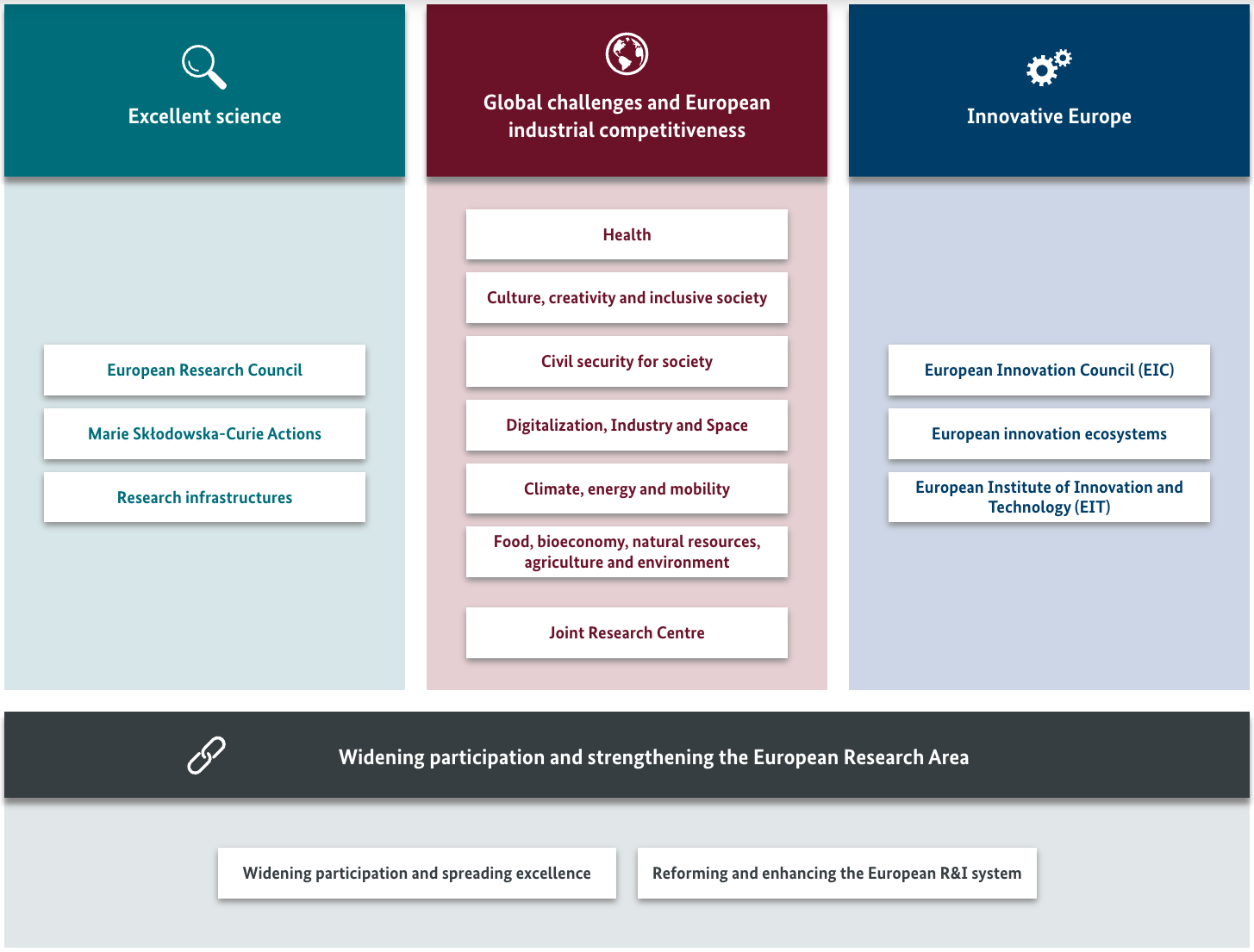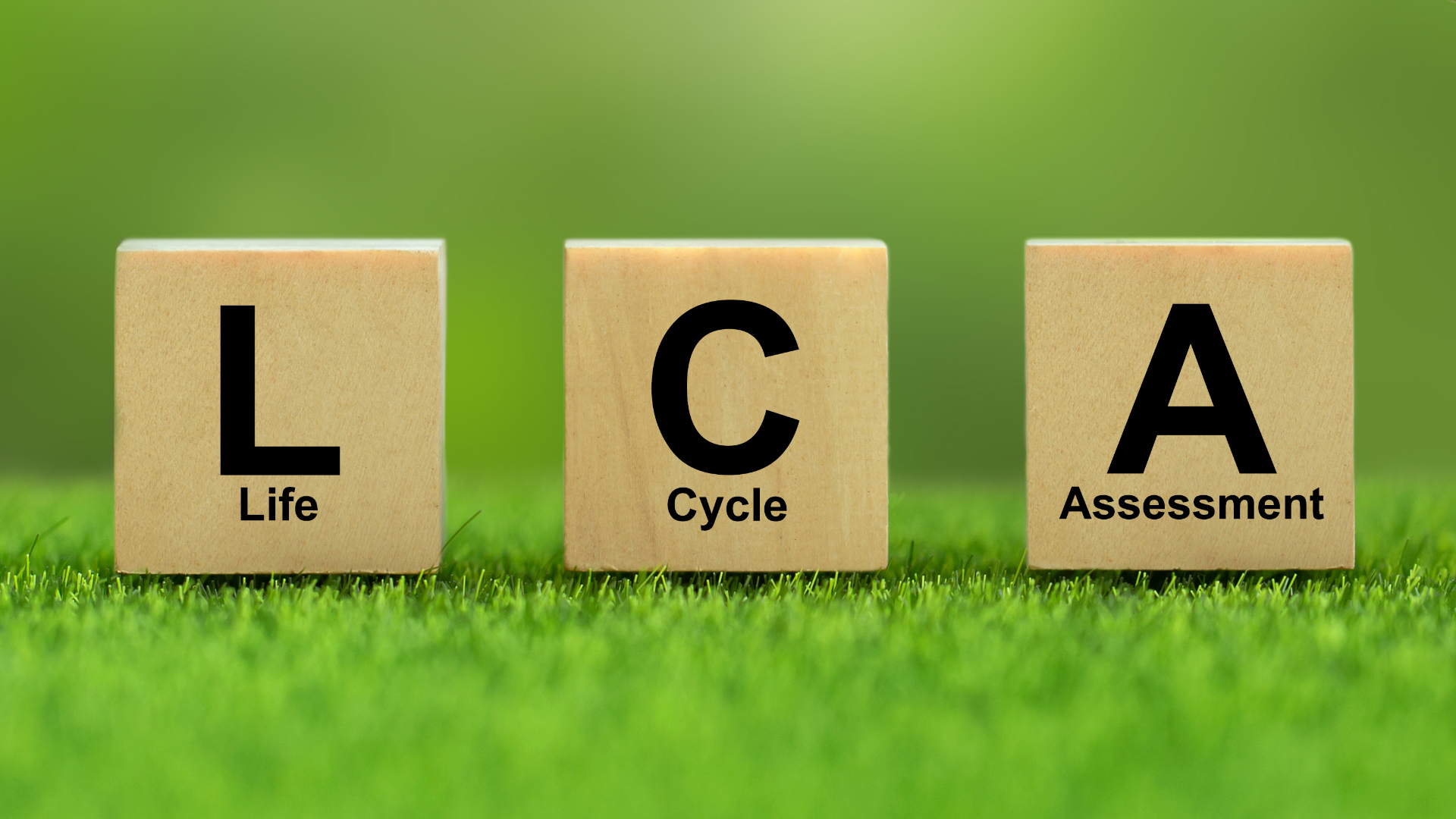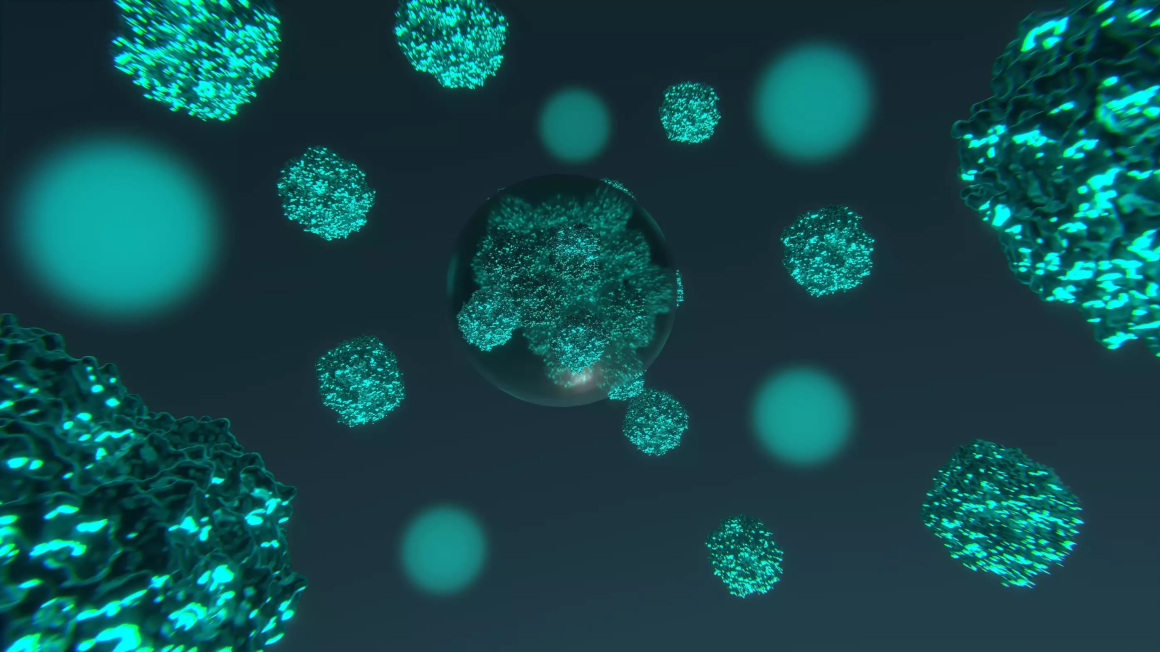Horizon Europe at a Glance
With a budget of more than €95.5 billion, Horizon Europe is the world’s largest research and innovation framework program (running from 2021 to 2027). It is the ninth program of its kind and the successor to Horizon 2020 (2014–2020). Horizon Europe supports both basic research and innovation. The program aims to contribute to economic growth, create new jobs, and help build a competitive economy.
It also addresses global challenges such as climate change, environmental protection, health, and food security, aiming to contribute to sustainable development. A third objective is to strengthen the European Research Area.
In addition to EU Member States, 18 third countries are associated with the program, having formal agreements with the EU and participating on equal terms.
Horizon Europe offers both open-topic and topic-specific calls and a wide range of funding formats – for established researchers and early-career scientists, for basic and applied research, for individual grants as well as collaborative projects. The program comprises a large variety of funding instruments interconnected through a complex structure.
The program is organized into three main pillars:

According to current participation statistics for Horizon Europe (source: ECORDA contract database, as of the end of 2023), Germany has secured the most funding with approximately €4.1 billion, followed by France with €2.94 billion and Spain with €2.93 billion. German institutions thus receive 17.6% of the total funding allocated to EU Member States.
Page 2 of 7
Cluster 6: Food, Bioeconomy, Natural Resources, Agriculture and Environment
Within the second pillar of Horizon Europe, Cluster 6 – “Food, Bioeconomy, Natural Resources, Agriculture and Environment” – is particularly relevant for this dossier and encompasses a broad range of topics. In addition to the core areas mentioned in the title, the cluster also includes biodiversity, circular economy, climate action, and strengthening rural and urban communities.
Funding under this cluster is designed to be interdisciplinary, transdisciplinary, and cross-sectoral, aiming for a transformative impact in tackling global challenges. Typically, international research consortia are funded, with at least three partners from three different countries. Most consortia are considerably larger. Other international countries may also be eligible to participate.
Research is considered to be transdisciplinary when it facilitates a mutual learning process between science, industry, and society.
The work program in Cluster 6 is divided into seven research and innovation areas called “Destinations,” all of which are relevant to bioeconomy topics:
- Destination 1: Biodiversity and ecosystem services
- Destination 2: Fair, healthy, and environmentally friendly food systems from primary production to consumption
- Destination 3: Circular economy and bioeconomy sectors
- Destination 4: Clean environment and zero pollution
- Destination 5: Land, ocean and water for climate action
- Destination 6: Resilient, inclusive, healthy, and green rural, coastal, and urban communities
- Destination 7: Innovative governance, environmental observation, and digital solutions in support of the European Green Deal
Work programs are typically published every two years and include calls specifying funding topics and requirements. These calls remain open for about four months and applications must be submitted via the EU Funding and Tenders Portal.
Bioeconomy-Funded Consortia Examples in Cluster 6
The following projects with German coordinators were selected:
• Valuable (Coordination: TU München), Scale-up (Ecologic Institute – ECO), Starfor BBS (TU Berlin), Shaping Bio (Fraunhofer ISI), Grazing4AgroEcology (Grünlandzentrum Niedersachsen/Bremen), Solo (Uni Leipzig), BIO2REG (FZ Jülich);
• Agriculture-related projects: Foster (DIL Deutsches Institut für Lebensmitteltechnik e. V.), D4AgEcol (Leipzig ATB), SPIDVAC (FLI Friedrich Loeffler Institut), REACT (Uni Gießen), Feast (Universität Heidelberg)
The NCP for Bioeconomy and Environment provides guidance on Cluster 6 calls.
Page 3 of 7
EU Missions
For the first time, Horizon Europe introduced so-called “Missions.” The concept was inspired by the Apollo 11 moon mission of the 1960s. Back then, the United States pledged to land the first human on the Moon within a decade.
EU Missions aim to help address pressing societal challenges with ambitious goals and create synergies with other programs at the EU, national, and regional levels. Their design involved EU Member States and stakeholders in an extensive multi-year process.
Mission Goals: Address societal challenges through interdisciplinary innovation and involve the public from the outset. Missions are designed to run over a ten-year period, through 2030. Initially, five missions were defined:
- Adaptation to Climate Change: support at least 150 European regions and communities to become climate resilient by 2030
- Cancer: working with Europe's Beating Cancer Plan to improve the lives of more than 3 million people by 2030 through prevention, cure and solutions to live longer and better
- Restore our Ocean and Waters by 2030
- 100 Climate-Neutral and Smart Cities by 2030
- A Soil Deal for Europe: 100 living labs and lighthouses to lead the transition towards healthy soils by 2030
Cluster 6 in Pillar II is home to the Oceans and Waters Mission and the Soil Mission.
Funded Projects in the Soil Mission
One example of a bioeconomy project within the Soil Mission is Healthy Municipal Soils (HuMUS) with German partner University of Hohenheim.
The NCP for Bioeconomy and Environment provides advice on the Soil and Waters Missions (see Chapter 7).
Page 4 of 7
European Partnerships
European Partnerships are a key element of the EU’s research and innovation funding strategy, contributing to political priorities like the European Green Deal.
These partnerships bring together the EU with private and/or public partners who commit to developing and implementing a shared research agenda. The first Strategic Plan of Horizon Europe (2021–2024) includes 49 such partnerships, most of which involve German participation.
There are three types of partnerships in Horizon Europe:
Co-programmed European Partnerships
Partnerships between the European Commission and usually private partners (e.g., associations or other stakeholder platforms), with jointly developed and implemented programs. These include the so-called Public-Private Partnerships (PPPs), such as the Bio-based Industries Joint Undertaking (BBI) from Horizon 2020.
Co-funded European Partnerships
Partnerships between the European Commission and research funding organizations as well as other public bodies from different countries – so-called Public-Public Partnerships (P2Ps). These are comparable to the ERA-NETs and Joint Programming Initiatives from FP8 Horizon 2020.
Institutionalised European Partnerships
Large-scale partnerships between the Commission, private entities (such as associations or other stakeholder platforms), and EU Member States and associated countries.
Currently, Cluster 6 ‘Food, Bioeconomy, Natural Resources, Agriculture and Environment’ includes eight partnerships, either already established or planned to launch at different stages of Horizon Europe.
Among them, the following are particularly relevant for the bioeconomy:
- Circular Bio-based Europe Joint Undertaking (CBE JU): Partnership for the bio-based industry
- AGROECOLOGY: Partnership for agroecological processes
- Animal Health and Welfare: Partnership for infectious animal diseases
- Agriculture of Data: Partnership for digital and data technologies in agriculture (currently still under negotiation)
- The Sustainable Blue Economy Partnership: Partnership for a climate-neutral and sustainable blue economy
- FutureFoodS: Partnership for safe and sustainable food systems
The NCP for Bioeconomy and Environment offers guidance on partnership-related calls (see Chapter 7).
Page 5 of 7
Excellent science: ERC and Marie Skłodowska-Curie Actions
The “Excellent Science” pillar houses the European Research Council (ERC), Marie Skłodowska-Curie Actions, and support for joint research infrastructures. All aim to foster pioneering research across Europe.
The ERC funds exceptional researchers of any nationality with groundbreaking project ideas in three career-stage categories: Starting, Consolidator, and Advanced Grants. Projects of any research topic can receive funding for up to five years, ranging from €1.5 to €2.5 million. Teams of two to four promising researchers can apply for Synergy Grants (up to six years and €10 million). The Proof of Concept scheme offers €150,000 for 18 months to explore the innovation potential of ERC-funded research.
Marie Skłodowska-Curie Actions support cross-border and cross-sectoral mobility, as well as career development. Instruments include doctoral networks, postdoctoral fellowships, staff exchanges, and co-funding of mobility programs and science communication initiatives.
Bioeconomy-related ERC news
The National Contact Point for the European Research Council (NCP ERC) provides guidance on ERC funding.
Page 6 of 7
Innovative Europa
Pillar III “Innovative Europe” supports disruptive and high-risk innovations and their rapid transfer into marketable products. It is implemented through the European Innovation Council (EIC), the European Institute of Innovation and Technology (EIT), and the strengthening of European Innovation Ecosystems (EIE).
The EIC, newly established under Horizon Europe, identifies breakthrough innovations with disruptive potential. It supports the entire innovation cycle, from basic research to market launch and scaling. Three instruments have been developed for this purpose: EIC Pathfinder, EIC Transition, and EIC Accelerator. They aim to identify the technological foundations of future innovations, further develop promising ideas from basic research, and turn innovations into marketable products.
The EIT, established in 2008, helps businesses and research/education institutions form cross-border partnerships – Knowledge and Innovation Communities (KICs) – to create companies and bring innovative products, processes and services to market.
Bioökonomie-Beispiele aus der EIC-Förderung
Page 7 of 7
The National Contact Point for Bioeconomy and Environment
Applying for EU funding projects is demanding and based on excellence criteria. Only proposals prioritized through a complex selection process are awarded funding.
To increase the chances of their proposal, applicants can rely on National Contact Points (NCPs). Officially appointed experts with deep knowledge of Horizon Europe support applicants throughout the entire project lifecycle: from idea development to proposal writing, submission, implementation, and reporting. Advice is confidential and free of charge.
In Germany, National Contact Points are usually based at project management organisations. The NCP Bioeconomy and Environment helps researchers and innovators by:
- Sharing updates on calls and deadlines
- Providing personalized advice at every stage of the application process
- Hosting information and training events
- Analyzing and summarizing the latest research policy developments
One particularly popular service: detailed reviews and guidance on individual project proposals. Thanks to their extensive experience, NCP staff offer valuable tips for optimizing submissions. Applicants are encouraged to reach out early to their subject-specific NCP. Long-term collaboration between applicants, NCPs, and (where available) institutional EU advisors has proven highly effective for successful submissions.
What does the NCP Bioeconomy and Environment do?
The NCP Bioeconomy and Environment provides advice and information on Cluster 6 topics and calls, as well as the missions “A Soil Deal for Europe” and “Restore our Ocean and Waters.” The service is free and confidential and includes individual consultations, proposal reviews, and a broad range of info and training sessions.



